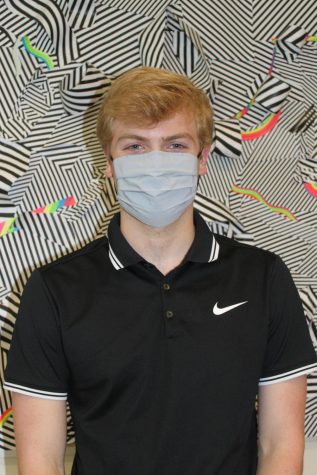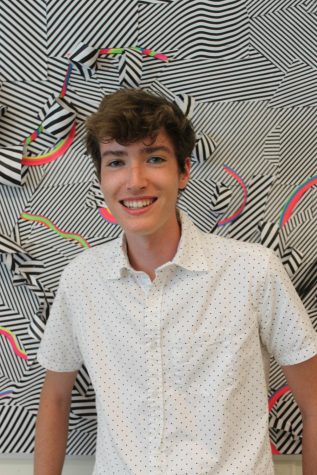Listening In: The Pros and Cons of Digital Test Proctoring
November 22, 2020
With stay-at-home orders still in place due to the threat of the COVID-19 pandemic, virtual learning systems have been widely instituted to continue students’ educations. However, with most doing their school work from home, students are lacking the supervision they would normally have in a classroom.
To help combat cheating and ensure academic integrity, exam proctoring software has risen in popularity with instructors across the country.
Most of these programs are lockdown browsers: custom browsers that observe a student’s testing, searching for red flags that may indicate cheating. Additionally, they disable copy/pasting, printing, accessing other programs, and visiting other websites while taking tests. However, some of these programs have taken surveillance a step further, perhaps raising some red flags of their own.
Many of these programs utilize the student’s webcam to monitor their face and surroundings, saving hours of these recordings to be reviewed by artificial intelligence or the student’s teacher. And while the software companies promise that the data is private and secure, companies such as ExamSoft have already experienced data breaches. One of these breaches stemmed from the October bar exam in Pennsylvania, resulting in more than 50 cases of identity theft and fraud.
Sebastien Desormeaux, a freshman at Georgia State University who is working towards an associate’s degree in architecture, said that three of his four classes have used GSU’s program of choice, the Respondus Lockdown Browser, during assessments.
“You can’t ‘alt-tab’ out of it or open new tabs, I’m pretty sure it has cursor tracing,” said Desormeaux. “And it knows when you’re inactive for too long. So, there’s a timer up at the top, and when it goes down to zero, you’ve been inactive for too long.”
Desormeaux reflected on how these proctored exams compared to in-person tests.
“I’m kind of looking at it from a professor’s point of view. I understand the desire to do it, right? You will crack down on cheating. But I feel like there’s more […] surveillance when you do a proctored exam than when you’re actually at a lecture hall,” he said. “In all of my classes, there’s like 60 students. And so [my professor] is down there at the bottom of the […] lecture hall. And he’s at his desk, grading papers or doing something and he’s not looking at us.”
Desormeaux said that, considering the amount of footage professors would have to sift through, proctor software might not be the best solution to the cheating problem after all.
“The thing is, if you’re just going to go to that much effort, you might as well just make your own test or you might, you know, try and make sure that you have a better academic policy in which [students] don’t need to cheat. It just seems like their resources are in the wrong area,” said Desormeaux.
He has also expressed concerns with the invasiveness of the software.
“It does, in some cases, feel like an infringement of privacy. The face cam being on doesn’t seem too irksome, but it does feel weird. It’s just like, 1984, big brother watching down on you,” he said.
Desormeaux’s biggest concern, however, is the potential of a “false positive,” where a student is flagged as suspicious but was actually following the rules.
“You’ll get a zero. You’ll get expelled if you cheat or you get suspected of cheating. […] There’s a zero tolerance policy for it. And there’s also sometimes no room for any form of justice. There’s no judge and jury. And there’s nothing you can really do about it if they think you cheated,” he said.
Testing surveillance software isn’t only present at colleges, though. Some teachers at Chamblee, like Mrs. Mattie Bell, have used similar kinds of software for their assessments.
“It’s sort of just to help keep the integrity of the test a little bit. So it’s not probably a perfect solution. But, you know, I teach an AP […] class. So we have a certain amount of stuff we need to cover. […] I need to be able to at least check people’s understanding somewhat. And really, in an AP, at least AP history class, I have to do some type of multiple choice checking. And we do a lot of writing too,” she said. “It’s a little bit of protection for my tests, because, while I do change them every year, I don’t change them completely. So it’s sort of also like a little bit of integrity for the test going forward.”
Bell uses a program that allows her to regulate her tests on Google Forms.
“It’s called AutoProctor,” she said. “Basically, it allows me to time the test. So I can open the test at a certain time, close the test at a certain time. From the time they open the test, they can only have like 40 minutes, or whatever I set it as. It also monitors switching tabs, so you can’t switch tabs when you’re in it.”
AutoProctor, however, doesn’t just put time limits on the test. It also monitors students’ activity through their cameras and microphones.
“It does monitor the camera, but not constantly. Only if […] it can’t see your eyes, like if you’re looking to the side or looking down, it’ll just take a picture,” said Bell. “Or, if there’s noise, like talking or something, it records an audio snippet. So if you were getting help from somebody, I guess, on the side [it would catch it].”
With this sort of program which monitors students, adding stress to test-takers can be an issue. A 2019 study conducted by experts at Metropolitan State University and the University of Minnesota found that anxiety was a major factor in students’ performance on tests. Students subjected to proctoring software experienced far more anxiety, and thus performed worse than a control group that took the same test without digital surveillance.
“ I could see how it could add a little bit of stress, but, you know, I’m watching them when they’re taking a normal test. So I feel like it’s similar,” Bell said. “But I haven’t gotten any bad feedback about it, at least.”
Chamblee students have also expressed concerns about the potential of AutoProctor reporting false positive results. For Bell, however, it hasn’t been a big issue.
“I have had to talk to a couple students at some point. And usually we just talk about, you know, sometimes it’s an honest mistake,” she said. “Anything I’ve seen in the test is usually like, you can hear somebody’s fan really loud. And that will trigger the microphone […] But I haven’t had any issues after I followed up with anybody, which has been good.”
Chamblee students have expressed varying levels of concern with the surveillance system.
“It kind of makes me stressed about making sure I’m looking at the screen all the time,” said Carly Aitken, a junior in Bell’s AP art history class. “But other than that, I think it actually makes me more focused.”
Aitken has experienced a false positive, although it did not end up affecting the outcome of her test.
“[AutoProctor] recorded one of my entire tests, the audio, because it was raining outside,” said Aitken. “So that was interesting.”
Carson Ankeny, a senior, talked about how the software has changed his test-taking.
“I know that one thing that I’ve noticed with the software specifically is that I sort of have the habit of sometimes humming to myself or saying my answers out loud, and rationalizing it,” said Ankeny. “And I know, on her tests, I don’t do any of that, because I’m too afraid of my mic picking it up. So I’m just like, ‘alright, I’m not gonna really make any noise at all.’ Because even though it’s totally reasonable to be making those sorts of noises, or whatever, I’m still afraid.”
However, he said he sees the necessity in the presence of surveillance software.
“I’m mostly just okay with the software, honestly. I know, there’s a lot of people who are probably like, ‘It’s really uncomfortable.’ You sort of just have to be able to understand that, since we’re all online now, it’s a very different environment than if we were in person,” he said. “And, you know, sometimes these sorts of things are the stuff that we have to deal with in order to make sure that people are still learning, people are still being ethical, when they’re taking their exams, making sure that they’re handling all of that properly.”
Lirina Curi, a sophomore, expressed concerns with multiple aspects of the program.
“It does kind of stress me out because while I’m also thinking of the test, I’m also thinking not to make a noise or say anything,” she said. “So like I’m not completely devoted to the test, rather […] the aspect of not making a sound or not moving.”
In addition to concerns about added stress, Curi talked about how the use of a microphone and webcam for surveillance could be problematic.
“I live with a lot of people. So sometimes people just come in and out of the room I’m in and that will count it as [suspicious],” she said. “So if they’re saying something that I don’t really need my teacher to know about, then it’s kinda hard to explain to the teacher afterwards.”
Aitken voiced a similar sentiment.
“I know, someone in my class, their sister came into the room while they’re taking the test and started talking. And that could be a bit [concerning] if someone walks in on you,” she said. “But other than that, I think that since I know that I’m being recorded, it’s okay.”
While the upside of digital proctoring is obvious, the drawbacks depend on each individual student’s situation. And as more and more tests move from paper to computer screens, teachers will need to decide whether the advantages of using the software is worth it.











